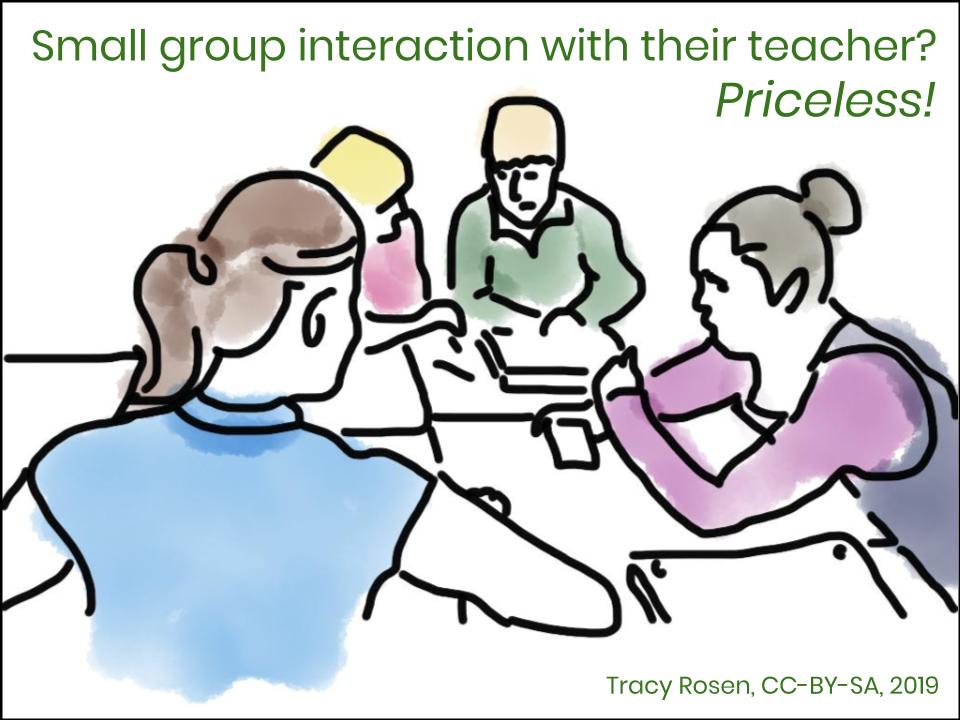Questions for Reflection:
Have you ever considered using stations in adult education?
Can you think of certain lessons you teach or learning situations you facilitate that can be tweaked into a stations model?
Do you already teach in stations part of the time? What works? What can be made better?
For administrators
How can you use stations in staff meetings or professional development?
What are stations?
Teaching with stations is not a new or revolutionary concept. It’s a common classroom practice used by teachers in the youth sector. There are many different models for setting up stations but the basic gist is that students rotate through different “learning stations” during a class.
Stations can allow teachers to interact with small groups of students while keeping the others on task. First and foremost, it is a classroom management strategy that allows for differentiation, better use of technology, and close monitoring of student progress, regardless of class size or subject. The best part? Little has to change in order to get started.
Article: Why I Still Love Teaching in Stations
Some benefits:
Differentiation + Multi-level teaching: We can tailor our lessons to each group in front of us.
Formative Assessment: We can ask specific questions and give immediate feedback to our students to help improve understanding.
Technology Integration: We often want to use technology but aren’t sure how to facilitate this in a way that makes sense. We may want to use video to teach content but…when? Having a technology station facilitates the teaching of content through video while knowing that students will be able to clarify their understanding with the teacher later in the day. A technology station can also be a great place to work on digital storytelling or other projects.
Attendance: When learners know that they will be working closely with their teacher they are less likely to be absent.
Classroom Community: As we spend more quality time with our students we are able to deepen our relationship around learning, which leads to richer learning experiences. Read how Catlyn Tucker uses stations to create greater classroom community: http://bit.ly/TuckerStations
Education Reform: Quebec’s educational programs are based on a student-centered approach to developing competencies. Stations can help to reinforce this by allowing for multiple ways of working towards mastery.When we can connect with small groups of learners at a teacher station, we can ensure that we have a handle on all of our students’ learning in a very manageable way.
View this presentation (en français) by a teacher who uses stations in her secondary fsl classroom in Ontario. It covers many of the points described above:
Les Centres d’apprentissage par Patricia Munante, OCDSB.
Read this article for concrete steps to introducing a station-rotation model for your students:
How do I set up a station rotation model in my classroom?
——
Learning resources created by Emilie Bowles (Teacher, NFSB), Avi Spector (RECIT Consultant, RSB), and Tracy Rosen (RECIT Consultant, CSSMI), 2016, 2017.
Thank you!
If you would like more information about these resources or if you have something you would like to add to this tile, please contact Avi Spector or Tracy Rosen.
All materials are expected to be reused and shared according to this Creative Commons license: CC BY-NC-SA 4.0

